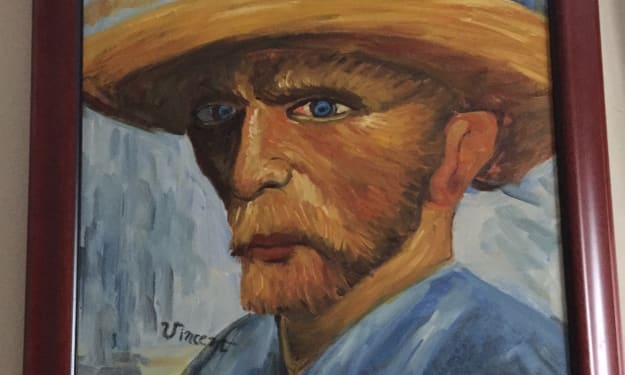
March 24, 2021
To the Judges
Vocal. Creators Competition
The Reader, a novel
By: Bernhard Schlink
A Comparative/Contrast Analysis
The Miracle on 34th Street, a novel
By: George Seaton
By: Welby Thomas Cox, Jr.
Re: If This, Then That
This is a novel by German law professor and judge Bernhard Schlink, published in Germany in 1995 and in the United States in 1997. The story is a parable, dealing with the difficulties post-war German generations have had comprehending the Holocaust. Some say it was written for those who came after the war for those struggling to come to terms with the past, The Reader explores how the post-war generations should approach the generation that took part in, or witnessed, the atrocities.
Professor Schlink’s book was well received in his native country and elsewhere, winning several awards. It was adapted by David Hare into a 2008 film directed by Stephen Daldry; the film was nominated for five Academy Awards with Kate Winslet winning for her portrayal of Hanna Schmitz.
The story is told in three parts by the main character, Michael Berg. Each part takes place in a different time period in the past. Part I begins in a West German city in 1958. After 15-year-old Michael becomes ill on his way home, 36-year-old tram conductor Hanna Schmitz notices him, cleans him up, and sees him safely home. He spends the next three months absent from school battling Hepatitis. He visits Hanna to thank her for her help and realizes he is attracted to her. Embarrassed after she catches him watching her getting dressed, he runs away, but he returns days later. After she asks him to retrieve coal from her cellar, he is covered in coal dust; she watches him bathe and seduces him. He returns eagerly to her apartment on a regular basis, and they begin a heated affair. They develop a ritual of bathing and having sex, before which she frequently has him read aloud to her, especially classical literature, such as The Odyssey and Chekhov’s, The Lady with the Dog. Both remain somewhat distant from each other emotionally, despite their physical closeness. Hanna is at times physically and verbally abusive to Michael. Months into the relationship, she suddenly leaves without a trace. The distance between them had been growing as Michael had been spending more time with his school friends; he feels guilty and believes it was something he did that caused her departure. The memory of her taints all his other relationships with women.
Six years later, while attending law school, Michael is part of a group of students observing a war crimes trial. A group of middle-aged women who had served as SS guards at a satellite of Auschwitz in occupied Poland are being tried for allowing 300 Jewish women under their ostensible "protection" to die in a fire locked in a church that had been bombed during the evacuation of the camp. The incident was chronicled in a book written by one of the few survivors, who emigrated to the United States after the war; she is the main prosecution witness at the trial.
Michael is stunned to see that Hanna is one of the defendants, sending him on a roller coaster of complex emotions. He feels guilty for having loved a remorseless criminal and at the same time is mystified at Hanna's willingness to accept full responsibility for supervising the other guards despite evidence proving otherwise. She is accused of writing the account of the fire.
At first she denies this, then in panic admits it in order not to have to provide a sample of her handwriting. Michael, horrified, realizes then that Hanna has a secret that she refuses to reveal at any cost—that she is illiterate. This explains many of Hanna's actions: her refusal of the promotion that would have removed her from the responsibility of supervising these women and also the panic she carried her entire life over being discovered.
During the trial, it transpires that she took in the weak, sickly women and had them read to her before they were sent to the gas chambers. Michael is uncertain if she wanted to make their last days bearable or if she sent them to their death so they would not reveal her secret.
She is convicted and sentenced to life in prison while the other women receive only minor sentences. After much deliberation, he chooses not to reveal her secret, which could have saved her from her life sentence, as their relationship was a forbidden one because he was a minor at the time.
Years have passed, Michael is divorced and has a daughter from his failed marriage. He is trying to come to terms with his feelings for Hanna and begins taping readings of books and sending them to her without any correspondence while she is in prison. Hanna begins to teach herself to read, and then write in a childlike way, by borrowing the books from the prison library and following the tapes along in the text. She writes to Michael, but he cannot bring himself to reply. After 18 years, Hanna is about to be released, so he agrees (after hesitation) to find her a place to stay and employment, visiting her in prison. On the day of her release in 1983, she commits suicide and Michael is heartbroken. Michael learns from the warden that she had been reading books about the holocaust and Hanna left him an assignment: give all her money to the survivor of the church fire.
While in the U.S., Michael travels to New York to visit the Jewish woman who was a witness at the trial, and who wrote the book about the winter death march from Auschwitz. She can see his terrible conflict of emotions and he finally tells of his youthful relationship with Hanna. The unspoken damage she left to the people around her hangs in the air. He reveals his short, cold marriage, and his distant relationship with his daughter. The woman understands, but nonetheless refuses to take the savings Hanna had asked Michael to convey to her, saying, "Using it for something to do with the Holocaust would really seem like an absolution to me, and that is something I neither wish nor care to grant." She asks that he donate it as he sees fit; he chooses a Jewish charity for combating illiteracy, in Hanna's name. Having had a caddy stolen from her when she was a child in the camp, the woman does take the old tea caddy in which Hanna had kept her money and mementos. Returning to Germany, and with a letter of thanks for the donation made in Hanna's name, Michael visits Hanna's grave after ten years for the first and only time.
Compare and Contrast
The Miracle on 34th Street was initially released in Great Britain as The Big Heart in 1947. It has become an iconic Christmas Comedy-drama written and directed by George Seaton and it won three Academy Awards. The story takes place in New York City and its focus is on the impact of a department store Santa who claims to be Santa Claus.
Kris Kringle appears as a dapper old man in full white beard, and he is indignant to discover a department store Santa in the annual Christmas parade is drunk. Kris, aka Santa Claus complains to the event director, Doris Walker who uses every charm known to women to persuade him to take the drunks part. His role is so profound that he is hired by Macy’s flagship store on 34th Street to play Santa for the children.
Ignoring instructions from head of the toy department to recommend overstocked items to undecided shoppers, Kris directs one woman to another store to fulfill her son's Christmas request. Initially confused, but nevertheless impressed by Kris's honesty and helpfulness, she informs the department that she will become a loyal Macy's customer because of Kris Kringle.
Now Doris Walker’s neighbor who is also sweet on her and happens to be a lawyer takes Doris’s young worldly daughter, Susan to see Santa. This is complicated because Doris has taught her daughter not to believe in fairy tales but while waiting in line she hears Kris speak Dutch with a child who doesn’t understand English, and the child is constricted. Further, Doris has informed Kris to tell her that he is not Santa but hired to play him, but he insist that he really is Santa Claus.!
Worried, Doris decides to fire him. However, Kris has generated so much positive publicity and goodwill for Macy's that Mr. Macy intervenes. To alleviate Doris's misgivings, they administer a "psychological evaluation". Kris passes easily.
The store expands on the concept of steering customers to competitors if necessary. To avoid looking greedy, Gimbels implements and further expands the same policy, forcing Macy's and others to reciprocate. As a consequence, Kris does the impossible, reconciling bitter rivals Macy and Gimbel.
Fred, the lawyer volunteers to be the guardian for Kris. Later, Kris makes a pact with Fred: he will work on Susan's cynicism while Fred does the same with Doris's. When Susan reveals to Kris she wants a house for Christmas, showing him a photo of her dream house torn from a magazine, he reluctantly promises to do his best.
At a hearing before Judge Henry X. Harper gets Kris to assert that he is Santa Claus and rests his case. Fred argues that Kris actually is Santa. Mara requests Harper rule that Santa does not exist. In private, Harper's political adviser, warns him that doing so would be disastrous for his upcoming reelection bid. Harper buys time by hearing evidence.
Doris quarrels with Fred when he quits his law firm to defend Kris. Fred calls Macy as a witness. When Mara asks if he believes Kris to be Santa, Macy starts to equivocate, but when pressed, he responds, "I do." On leaving the stand, Macy fires the psychologist. Fred then calls Mara's own young son, who testifies that his father told him that Santa was real. Mara concedes the point.
After his son and wife leave the courtroom, Mara then demands that Fred prove that Kris is "the one and only" Santa Claus on the basis of some competent authority. While Fred searches frantically, Susan writes Kris a letter to cheer him up, which Doris also signs. When a New York Post Office mail sorter sees Susan's letter, which is addressed to Kris at the New York courthouse, he suggests delivering all of the letters addressed to Santa Claus, in the dead-letter mail, to Kris.
When court resumes, Fred still has not found some competent authority to back Kris's claim, but then an official informs Fred of the arrival of the mailbags at the courthouse. Fred presents Harper with three of the letters, addressed simply to "Santa Claus" that were just now delivered to Kris, asserting that the Post Office—a branch of the U.S. federal government—has acknowledged that Kris is the one and only Santa Claus. Mara objects, on the grounds that three letters alone do not constitute sufficient proof, and Fred tells Harper that he hesitates to produce many more such letters that he says that he has. When Harper insists, Fred has all of the letters addressed to "Santa Claus", in all of the mailbags, dumped onto Harper's desk. Unpiling himself from the deluge of letters, Harper (with great relief) dismisses the case.
On Christmas morning at a celebration at Dr. Pierce's clinic, Susan loses faith in Kris when he does not give her the house she wanted. Kris offers Fred and Doris a route home that avoids traffic. Along the way, Susan sees the very image of her dream house with a "For Sale" sign in front. Susan demands that Fred stop the car, whereupon she joyfully runs into the house, exclaiming "Mr. Kringle IS Santa Claus!" Fred learns that Doris had encouraged Susan to have faith and suggests they purchase the house—a proposition with which Doris joyfully agrees. He then boasts that he must be a great lawyer since he proved an eccentric old man was Santa. However, when he and Doris spot a cane in the house that looks just like Kris's, he is not so sure that he worked this miracle alone.
Summation/Final Argument
As an old softie, I loved both of these movies and I must say as trite, as corny as the screenplay for The Miracle on 34th Street it contained all the parts which make for a great movie, and it has transcended the era’s and continues to be a family favorite on the Christmas holidays.
I had the opportunity to speak with Professor Bernhard Schlink, the author of “the Reader,” telling him how much I loved the book but hated the ending and he authorized me to rewrite it. To date, I have only read and reread the book. I know what I want to do. All of the ingredients are clearly revealed in the book to construct an ending which resembles The Miracle on 34th Street.
Let me ask you to look at where we might go with the reorientation of the ending for The Reader. We know that Michael Berg begins the story as a fifteen-year-old boy who falls in lust with a thirty-six-year-old woman. His heart is broken when the paramour, Hanna has suddenly moved with no notice of the reason she left or her where abouts.
Six years later, while attending law school, Michael is part of a group of students observing a war crimes trial. A group of middle-aged women who had served as SS guards at a satellite of Auschwitz in occupied Poland are being tried for allowing 300 Jewish women under their ostensible "protection" to die in a fire locked in a church that had been bombed during the evacuation of the camp.
After the testimony by all the other SS Guards that Hanna was the authority which ordered the execution in writing, (visa-vie the USPO in The Miracle on 34th Street) Michael realizes that Hanna is innocent. The authority for her innocence is that she is illiterate and not capable of writing her name, much less writing a legal document ordering the death of 300 inmates in a gruesome church fire which the guards set and lock the doors on those inmates in the church. It is at this point in the story where the transition takes place, and Michael becomes Fred, riding in on his white horse, he delivers a Writ of Habeas Corpus as a German citizen with exculpatory evidence of a nature to prove the innocence of the defendant and the culpability of the other guards in second degree murder.
Michael is able to lay out the legal argument by placing the defendant on the stand unbeknownst to her she sees Michael “The Kid” whom she seduced standing before her as a man and as her savory. This is a poignant moment as he hands her a pencil and pad. The camera catches her face as her eyelids twitch in recognition and a tear is seen at the edge of her eye lid...the little boy she once loved immorally, stands before her as her savior.
“Hanna Schmitz...you have taken an oath before this court, to tell the truth and nothing but the truth, haven’t you.”
“Yes”
“You lied, didn’t you?”
She rubs her hands together; she licks her ample lips which once sucked the virginity from this boy. She hesitates!
“Ms. Schmitz, in the face of certain death or life sentence you defer the truth?”
He hands her a yellow legal pad and takes from his breast pocket a beautiful fountain pen which he hands to her and as he does so the hands of lovers touch and remain suspended in a moment of recognition for what feels like an eternity to her.
“Now, I want you to write this down for the court...a single word which describes who you are?”
She begins...and the fountain pen releases a blue dot!
“Ms. Schmitz, must I order the court to order you to identify yourself, now please do as I ask.”
She burst into tears, dropping the pad and the beautiful fountain pen which squirts blue ink onto her inmate uniform at the spot where the crotch rest.
“Your honor, if it pleases this court, the defendant has failed to write her name as required by the law, she did not do so out of disrespect for the law or this court, she did so your honor because she could not do so functionally! Your honor Ms. Schmitz is functionally illiterate, and she could not have written a legal command to start the fire in the church, nor the order to lock the doors to effectively incinerate 300 inmates.”
Michael picks up the pad and the fountain pen, he walks across the room to the section where the other defendants are seated. Beginning at the end of the row, he hands the pad and a pencil to the first woman.
“Please write your name!”
Fade Out
Citations:
Dr. Bernhard Schlink
George Seaton
www.wikipedia.org
https://www.britannica.com

About the Creator
Welby Cox
Vocal plus has it?






Comments
There are no comments for this story
Be the first to respond and start the conversation.